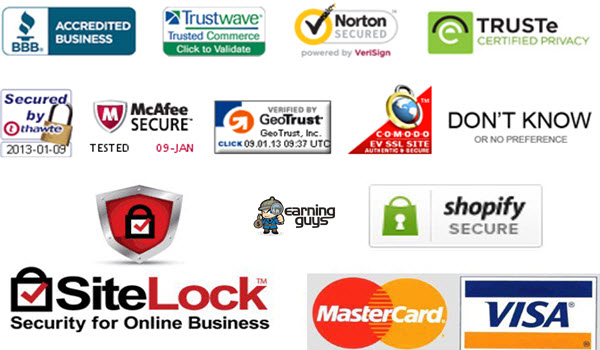Web Design Tips: How To Incorporate Social Proof On Your Website
According to Forbes Magazine, social proof is if someone else has “done, used, or talk about it online.”
It’s also when popular opinion influences over a person’s opinion on something, and in your case ‒ your business.
Your goal is to make prospects confident in the choice they’re about to make. Whether it’s signing up in your email list, buying a product, or becoming a member, you have to ensure users that they’re making the right choice.
Social proof gives them this assurance, making you look trustworthy and reliable.
But how do you incorporate social proof in your web design?
Well, in this post, we’ll talk about the practical way how you can integrate it in your site. Moreover, if you’re looking for more professional-looking web design, choose to outsource in the Philippines.
Allow Customers to Leave Reviews
Customer reviews are one of the most popular forms of social proof. However, you have to be cautious with this as it has the highest potential in introducing negative feedback that can hurt your business. On the contrary, a bit of negative feedback is fine as long as you’re addressing issues and concerns in a professional and timely way.
Showcase Client Testimonials

Whatever “thank you’s” and other praiseworthy quotes that you get on social media, you can use customer testimonials (video or written) as a valuable form of social proof.
Just remember that when you decide to use these testimonials, you should include the name and photo of the person or company so that your customers will know that it’s authentic.
How do you want your testimonials to appear on your e-commerce site? Aside from getting a quote from customers and putting their names under it, the most effective form is through video, since they’re tough to fake, enhancing your brand’s credibility even more.
You also have the option to put these testimonials right in your homepage or devote an entire page exclusively for it.
Emphasize On Social Media Numbers
If you’re only starting out, then you probably couldn’t do this yet. However, continue to tell yourself that someone you soon will. Your main focus should be on numbers because it shows that you’re well trusted.
For instance, you can include the total:
- Subscriber count of your blog
- Number of customers you’ve served
- Revenues you’ve helped clients generate
Show Client Case Studies

Case studies are like an intersection between a client’s testimonial and impressive statistics. However, these are the most difficult ones to come up with because it needs you to dive into the numbers.
You also have to track down customers that are willing to participate, along with the actual writing and case study design.
If you’re able to pull it off in the end though, you’re sure to make an impact. Remember, prospective clients will always want to see results.
Brand Logos

When you display the logos of the brands you’ve worked with (or the ones that purchased a product or availed of service), you’re also saying that these brands endorse you as well.
Why? Because they’ve already done business with you.
Adding brand logos in your webpage’s design makes a lasting impact on your audience.
Employing this strategy creates a trust signal. It improves your trustworthiness in the eyes of prospective customers. By highlighting small and big brands that work with your business, you’re showing the world that you’re in demand and reliable.
Trust badges

Trust badges are quite similar to brand logos, but the main difference is that they’re geared on assuring clients that all their personal and financial information is safe when transacting with you.
Simply put, trust badges are icons that you see when you’re buying something online. These usually show logos from companies like Norton, BBB (Better Business Bureau) and McAfee.
Logos of McAfee and Norton would usually assure prospective buyers that all their transactions will be safe. Meanwhile, a logo from the BBB (Better Business Bureau) tells them that they won’t get ripped off.
Badges give your customers peace of mind because it shows them that reputable organizations are willing to vouch for you.
Integrate UGC
User-generated content, also known as UGC is another excellent form of social proof. The good news is, you don’t have to do anything to create it.
All you need to do is wait.
Wait for your customers to take photos, videos. Let them rave how excellent your services are, and publish it on your website and social media. That way, it’s easier for prospects to come up with their own purchasing decisions.
Social Proof in Your Site
Remember that every social proof that you should publish online should be genuine. If you wrote fake testimonials or paid people to write positive reviews about your services, then these could potentially backfire.
So you need to be smart with your placements. Social proof should actively support that story that you’re telling in your site. That’s why these are usually most effective when placed on landing pages, or closely related to your products and services.
There’s also a point in the sales funnel wherein customers eventually have to make a decision, and social proof can be a deciding factor whether they proceed with the transaction or not. Your goal is to get rid of any doubts on their mind, so you need also to keep it near your call-to-action.
















